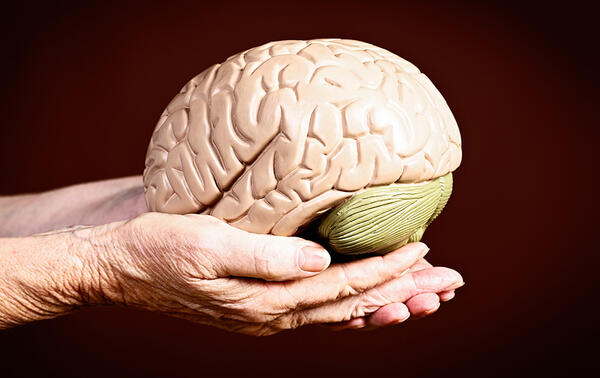
Exploring the Healing Effects of Brainspotting
In the realm of mental health therapies, Brainspotting has emerged as a distinctive and powerful approach, capturing the attention of therapists and clients alike. Developed by Dr. David Grand, this therapeutic method delves into the connection between eye movements and emotional processing, offering a unique perspective on trauma resolution and psychological healing. Brainspotting, often referred to as "where you look affects how you feel," operates on the principle that the eyes can guide therapists and clients to access, process, and release deep-seated emotional traumas. Let's embark on a journey to uncover the intricacies of Brainspotting and explore its potential to bring about profound healing.
Unveiling the Mechanism of Brainspotting
At its core, Brainspotting relies on the idea that eye movements are intricately linked to the processing of traumatic experiences. During a session, the therapist assists the client in finding a specific eye position, or "brainspot," that corresponds to the emotional or somatic disturbance. This intentional focus on a particular point activates the brain's self-healing capacities, facilitating the release of unresolved emotions. The process taps into the brain-body connection, allowing individuals to reprocess traumatic memories at a deep and profound level. As therapists guide clients through these visually-directed sessions, a heightened state of awareness is achieved, paving the way for transformative healing.
Does it Work?
The efficacy of Brainspotting is a question that resonates within therapeutic circles and among those seeking healing. So, if you were ever wondering, does brainspotting work? You’ll want to read further. Anecdotal evidence and a growing body of research suggest that, for many individuals, Brainspotting can be remarkably effective. Clients often report a sense of relief, breakthroughs, and transformative shifts in their emotional well-being. The method's success extends beyond traditional talk therapies, making it particularly valuable for those who have found limited relief through conventional approaches. As research advances, the scientific community is increasingly acknowledging Brainspotting's potential to address various mental health challenges, from trauma-related disorders to anxiety and performance issues. While the effectiveness of any therapeutic approach can vary from person to person, the evolving landscape of testimonials and research findings indicates that Brainspotting indeed holds promise as a powerful tool in the realm of psychological healing.
Navigating the Landscape of Trauma
One of Brainspotting's unique strengths lies in its ability to navigate the complex and multifaceted landscape of trauma. Unlike traditional talk therapies, which primarily engage the neocortex, Brainspotting targets the limbic system and the autonomic nervous system, where emotional and physical trauma is often stored. By addressing trauma at its core, clients may experience a more direct and visceral resolution of their emotional wounds. This approach proves particularly beneficial for individuals who have struggled with talk therapy or those who find it challenging to articulate their emotions verbally.
Brainspotting in Action: A Therapeutic Dance
The therapeutic dance of Brainspotting involves a dynamic interaction between the therapist and the client. Rather than adhering to a rigid structure, the approach is flexible and adaptive. Therapists attune themselves to the client's unique responses and cues, creating a space that allows for a personalized healing journey. The eyes, serving as a compass, guide the therapeutic exploration, unlocking layers of suppressed emotions. The nonverbal nature of Brainspotting can be especially liberating, providing an alternative path for expression and healing beyond the confines of language.
Beyond Words: The Power of the Subconscious
Submerged beneath the surface of our conscious awareness lie the vast realms of the subconscious mind. Brainspotting, by bypassing the need for verbal articulation, taps into this powerful reservoir of emotions, memories, and sensations. Clients often report a sense of profound relief and release as they access and process deeply buried traumas. This subconscious exploration opens doors to insights and self-discovery, fostering a transformative healing process that extends beyond the confines of the therapy room.
The Efficacy of Brainspotting: Anecdotes and Research
Anecdotal evidence and research studies alike underscore the efficacy of Brainspotting in treating a spectrum of mental health issues. From post-traumatic stress disorder (PTSD) to anxiety, depression, and performance-related challenges, Brainspotting has demonstrated its versatility. Clients and therapists alike share stories of breakthroughs and transformative shifts, attesting to the method's ability to effect lasting change. As research continues to unfold, the scientific community is increasingly recognizing the potential of Brainspotting as a valuable addition to the therapeutic toolkit.
In conclusion, Brainspotting stands as a fascinating and promising modality in the field of mental health. Its innovative approach to trauma resolution, reliance on the body's innate healing capacities, and nonverbal nature make it a unique and powerful tool for therapists and clients alike. As we continue to delve into the intricacies of the mind-body connection, Brainspotting serves as a beacon of hope, offering a path toward profound healing beyond the confines of traditional talk therapies. As we explore this therapeutic frontier, the eyes become not just windows to the soul but also guides on the transformative journey to emotional well-being.